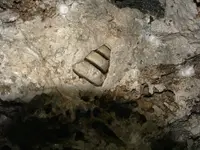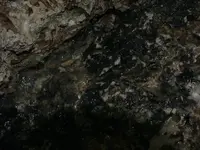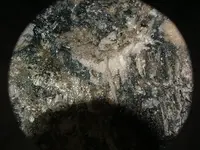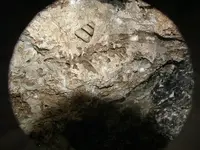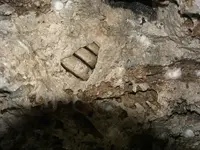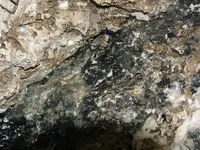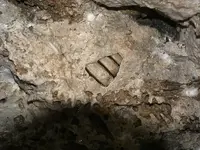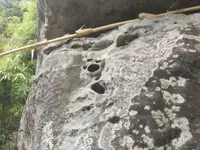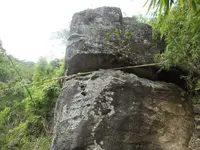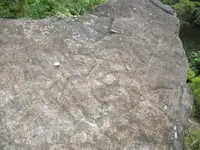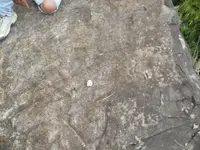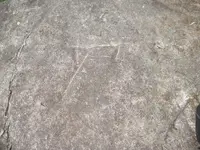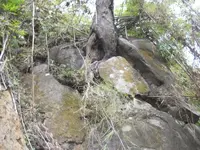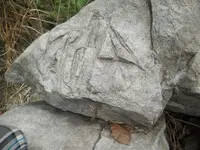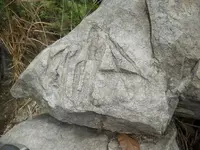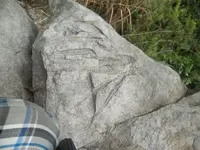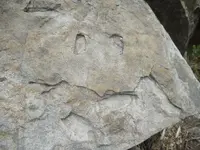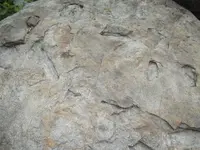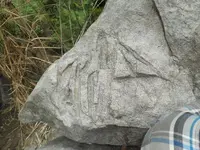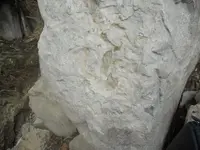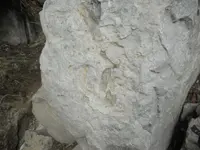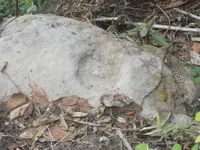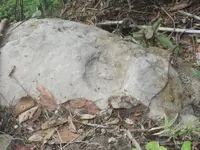You are using an out of date browser. It may not display this or other websites correctly.
You should upgrade or use an alternative browser.
You should upgrade or use an alternative browser.
Japanese Treasure Marks and Symbols
- Thread starter ekimsonlac
- Start date
ricogaviola
Tenderfoot
- Joined
- Jun 16, 2013
- Messages
- 6
- Reaction score
- 1
- Golden Thread
- 0
- Primary Interest:
- All Treasure Hunting
ricogaviola
Tenderfoot
- Joined
- Jun 16, 2013
- Messages
- 6
- Reaction score
- 1
- Golden Thread
- 0
- Primary Interest:
- All Treasure Hunting
wacky22
Jr. Member
- Joined
- Oct 25, 2012
- Messages
- 34
- Reaction score
- 2
- Golden Thread
- 0
- Primary Interest:
- All Treasure Hunting
y0u are wasting ur time digging such very deep well..japanese was not hid there treasure at very deep location as they had no time to dig when time of war..accordingly,,those treasure that was hid very deep was located under tunnel or cave..that was the japanese told me..believe me and you have peace in mind..i'm from the philippines..
lacoste
Tenderfoot
- Joined
- Sep 24, 2013
- Messages
- 3
- Reaction score
- 1
- Golden Thread
- 0
- Primary Interest:
- All Treasure Hunting
"Just keep on digging.. all the good signs are there. hearts meaning Treasure downside.... Good Luck...".
WRONG WRONG WRONG...YOU ONLY HAVE HALF OF THE STORY..HEARTS WITH HOLES IN THEM OR HEARTS WITH C
CRACKS OR BROKEN PARTS MEANS DEATH TRAP...SURE HOPE ekimsonlac
IS SMART ENOUGH NOT TO TAKE YOUR ADVICE...YOU COULD BE RESPONSIBLE FOR HIS DEATHPLEASE DONT SPEAK ABOUT THINGS YOU DO NOT KNOW OF FOR SURE..VERY VERY IRESPONSIBLE!!!!!!
In Greece we found hurts made on trees or rocks.i know when is just a hurt means place under the ground.When the hurts has arrows or are broken then means deadly trap.
rangler
Bronze Member
- Joined
- Jul 12, 2004
- Messages
- 1,320
- Reaction score
- 201
- Golden Thread
- 0
- Detector(s) used
- for solutions to the jesuit code -email pics to: randy_ferringer@yahoo.com
;rangler8@gmail.no locations needed! oro bro!
- Primary Interest:
- Other
"y0u are wasting ur time digging such very deep well..japanese was not hid there treasure at very deep location as they had no time to dig when time of war..accordingly,,those treasure that was hid very deep was located under tunnel or cave..that was the japanese told me..believe me and you have peace in mind..i'm from the philippines.."
wacky you are totally wrong with this statement~!!!!
only the the tinest bit of reseach on your part will reveal this to be very untrue
``
the japanese sent a hundred thousand troops in civilian clothes 20years before ww2 to the philippines to dig gun placements and pits up to 800 feet deep..it amazes me that people use simple logic on complex problems then state it like it was true...
get a grip and don't speak about that which you do not know for sure sir~!!!!!
fact: the depths of pits can be determinded by how many troops were stationed in that area...a group of 500-1000 men can dig a pit with death traps, to 200-300 feet in depth,.,.,a group of 50 men usually to about 40 feet or about twice the water table deepth to insure the water trap would flood forever any pit digging..always always do your research before you make such erroneous statements sir..it is a big diservide to the treasure hunter community- think before you type nonsense~!!!
oro for the correctly informed
rangler
wacky you are totally wrong with this statement~!!!!
only the the tinest bit of reseach on your part will reveal this to be very untrue
``
the japanese sent a hundred thousand troops in civilian clothes 20years before ww2 to the philippines to dig gun placements and pits up to 800 feet deep..it amazes me that people use simple logic on complex problems then state it like it was true...
get a grip and don't speak about that which you do not know for sure sir~!!!!!
fact: the depths of pits can be determinded by how many troops were stationed in that area...a group of 500-1000 men can dig a pit with death traps, to 200-300 feet in depth,.,.,a group of 50 men usually to about 40 feet or about twice the water table deepth to insure the water trap would flood forever any pit digging..always always do your research before you make such erroneous statements sir..it is a big diservide to the treasure hunter community- think before you type nonsense~!!!
oro for the correctly informed
rangler
Last edited:
Rawhide
Silver Member
- Joined
- Nov 17, 2010
- Messages
- 3,591
- Reaction score
- 2,188
- Golden Thread
- 0
- Location
- SouthWestern USA
- Detector(s) used
- Nox 800, Etrac, F75, AT Pro. Last two for sale.
- Primary Interest:
- All Treasure Hunting
Let me see if I get this right. Your on a Island, and you are looking for treasure. You think the Japanese put treasure there? Help me to understand what treasure the Island held the Japanese could not take with them and had to be buried? Earth Quakes, typhoons and such, is there even any tunnels left to explore? Would it not make sense to get some good equipment to look deep so you dont dig?
rangler
Bronze Member
- Joined
- Jul 12, 2004
- Messages
- 1,320
- Reaction score
- 201
- Golden Thread
- 0
- Detector(s) used
- for solutions to the jesuit code -email pics to: randy_ferringer@yahoo.com
;rangler8@gmail.no locations needed! oro bro!
- Primary Interest:
- Other
casca,
the treasure of yamashita is real..read my threads on the subject...186 deep pits containing hundreds of tons of gold stolen by the japanese during what is now called the "rape of nanking" read sir read.it is all there for the reading...
amazing story or all treasure stories..estimates of 186,000 tones of gold stolen from all of south asia and china..
it was hidden in the philippines because our war ships were making sure japan was contained..they thought they would get the phils as conmpensation during the negotiations when the lost the war with america..ha they did not.but the pits were dug 20 years before the rape and befor pearl harbor..it makes a geat true adventure story and yes pinoys[filipinos] are finding the signs and marks that lead to these pits...i was in the RP some years ago to investigate a pit and am currently helping all I can with two digs as we speak.. i do admit it sounds crazy but I have researched this here and over there and can tell you I have seen the pics of 2kilo bars with markings to authenticate the bars
oro for those in the know
rangler
ps most well off educated th'r are in the phils now and have been for years..me too once I get some free time...ha~!
the treasure of yamashita is real..read my threads on the subject...186 deep pits containing hundreds of tons of gold stolen by the japanese during what is now called the "rape of nanking" read sir read.it is all there for the reading...
amazing story or all treasure stories..estimates of 186,000 tones of gold stolen from all of south asia and china..
it was hidden in the philippines because our war ships were making sure japan was contained..they thought they would get the phils as conmpensation during the negotiations when the lost the war with america..ha they did not.but the pits were dug 20 years before the rape and befor pearl harbor..it makes a geat true adventure story and yes pinoys[filipinos] are finding the signs and marks that lead to these pits...i was in the RP some years ago to investigate a pit and am currently helping all I can with two digs as we speak.. i do admit it sounds crazy but I have researched this here and over there and can tell you I have seen the pics of 2kilo bars with markings to authenticate the bars
oro for those in the know
rangler
ps most well off educated th'r are in the phils now and have been for years..me too once I get some free time...ha~!
renantagum30
Sr. Member
- Joined
- Nov 5, 2011
- Messages
- 428
- Reaction score
- 171
- Golden Thread
- 0
- Primary Interest:
- All Treasure Hunting
"y0u are wasting ur time digging such very deep well..japanese was not hid there treasure at very deep location as they had no time to dig when time of war..accordingly,,those treasure that was hid very deep was located under tunnel or cave..that was the japanese told me..believe me and you have peace in mind..i'm from the philippines.."
wacky you are totally wrong with this statement~!!!!
only the the tinest bit of reseach on your part will reveal this to be very untrue
``
the japanese sent a hundred thousand troops in civilian clothes 20years before ww2 to the philippines to dig gun placements and pits up to 800 feet deep..it amazes me that people use simple logic on complex problems then state it like it was true...
get a grip and don't speak about that which you do not know for sure sir~!!!!!
fact: the depths of pits can be determinded by how many troops were stationed in that area...a group of 500-1000 men can dig a pit with death traps, to 200-300 feet in depth,.,.,a group of 50 men usually to about 40 feet or about twice the water table deepth to insure the water trap would flood forever any pit digging..always always do your research before you make such erroneous statements sir..it is a big diservide to the treasure hunter community- think before you type nonsense~!!!
oro for the correctly informed
rangler
I FULLY AGREE WITH RANGLER.
I MYSELF WAS ABLE TO HIT A CEMENT VAULT AT 48 FEET. NOT ONLY ONCE. BUT TWICE. one was a sliding vault, similar to the sliding vault that you may have heard in Egyptian Treasures. The cement vault is somewhat placed in a balancer. any pressure or removal of the soil structures from above would cause the cement vault to transfer to another chamber. after 3 days of drilling, the cement vault did slide to another chamber. we transferred to another area with another vault. we drilled it until 45-48 feet. we encountered another cement vault. this time, we applied no pressure upon reaching 48 feet. we carefully removed the soil structures just enough that it will not slide. upon removing the soil materials from above, the cement vault tilted and inclined if there are two persons standing on the said vault, similar to what you have seen in national treasure part 1. when the land owner sent his two men and realized that we were not joking, greed set in and he ejected us from his area for various reasons.
i agree with rangler. those pits were not dug overnight. those were carefully prepared 20-50 years in advance. as early as 1908, several japanese farm workers have already been employed here in davao city , philippines. those japanese workers turned out to be geologist, engineers, surveyors and high ranking officials during the war. it only supported the idea that they have already planned and surveyed each and every area in the pHIlippines. from the start of the war in 1940-1941 up to 1945, those pits and tunnels were almost complete so much so that what was left to be done was to hide the gold there and seal it. of course, this may not be true in some other areas because one of the filipino survivors happened to be the uncle of my friend. he professed that in one area in panabo, several thousands POWs were made to dig against their wills. some golds loaded in drums and trucks were transported there. those trucks can no longer be found departing the said area. that said uncle happened to be one of those trusted by the japanese to count the POW upon going to the said area and departing from the said area. he was one of those POW who knows how to speak english and was thus trusted to bridge between those Filipino POWs and to the Japanese. He was able to escape because the security upon his person was lax as he was very much trusted by the Japanese.
I am only saying this because i want to disprove those who claimed that the Japanese treasures were hastily thrown and buried in the Philippines. the truth is it was not.
wacky you are totally wrong with this statement~!!!!
only the the tinest bit of reseach on your part will reveal this to be very untrue
``
the japanese sent a hundred thousand troops in civilian clothes 20years before ww2 to the philippines to dig gun placements and pits up to 800 feet deep..it amazes me that people use simple logic on complex problems then state it like it was true...
get a grip and don't speak about that which you do not know for sure sir~!!!!!
fact: the depths of pits can be determinded by how many troops were stationed in that area...a group of 500-1000 men can dig a pit with death traps, to 200-300 feet in depth,.,.,a group of 50 men usually to about 40 feet or about twice the water table deepth to insure the water trap would flood forever any pit digging..always always do your research before you make such erroneous statements sir..it is a big diservide to the treasure hunter community- think before you type nonsense~!!!
oro for the correctly informed
rangler
I FULLY AGREE WITH RANGLER.
I MYSELF WAS ABLE TO HIT A CEMENT VAULT AT 48 FEET. NOT ONLY ONCE. BUT TWICE. one was a sliding vault, similar to the sliding vault that you may have heard in Egyptian Treasures. The cement vault is somewhat placed in a balancer. any pressure or removal of the soil structures from above would cause the cement vault to transfer to another chamber. after 3 days of drilling, the cement vault did slide to another chamber. we transferred to another area with another vault. we drilled it until 45-48 feet. we encountered another cement vault. this time, we applied no pressure upon reaching 48 feet. we carefully removed the soil structures just enough that it will not slide. upon removing the soil materials from above, the cement vault tilted and inclined if there are two persons standing on the said vault, similar to what you have seen in national treasure part 1. when the land owner sent his two men and realized that we were not joking, greed set in and he ejected us from his area for various reasons.
i agree with rangler. those pits were not dug overnight. those were carefully prepared 20-50 years in advance. as early as 1908, several japanese farm workers have already been employed here in davao city , philippines. those japanese workers turned out to be geologist, engineers, surveyors and high ranking officials during the war. it only supported the idea that they have already planned and surveyed each and every area in the pHIlippines. from the start of the war in 1940-1941 up to 1945, those pits and tunnels were almost complete so much so that what was left to be done was to hide the gold there and seal it. of course, this may not be true in some other areas because one of the filipino survivors happened to be the uncle of my friend. he professed that in one area in panabo, several thousands POWs were made to dig against their wills. some golds loaded in drums and trucks were transported there. those trucks can no longer be found departing the said area. that said uncle happened to be one of those trusted by the japanese to count the POW upon going to the said area and departing from the said area. he was one of those POW who knows how to speak english and was thus trusted to bridge between those Filipino POWs and to the Japanese. He was able to escape because the security upon his person was lax as he was very much trusted by the Japanese.
I am only saying this because i want to disprove those who claimed that the Japanese treasures were hastily thrown and buried in the Philippines. the truth is it was not.
rangler
Bronze Member
- Joined
- Jul 12, 2004
- Messages
- 1,320
- Reaction score
- 201
- Golden Thread
- 0
- Detector(s) used
- for solutions to the jesuit code -email pics to: randy_ferringer@yahoo.com
;rangler8@gmail.no locations needed! oro bro!
- Primary Interest:
- Other
ne thing for sure this was no accident-that oil trap is a first..and only confirms that lots of goodies are buried down there..otherwise such unusual attempts at stopping you would not be there...and it shows, that a huge contingent of armed forces with machinery-because more than likely this was used oil from trucks,planes, tanks, ships ect and that they buried a huge underground steel tank like our 10,000 gallon gasoline tanks and set it up as the first oil trap- if you can afford, but a large tank and pump the oil out of the pit and into the tank, it m, ight have some value..good luck
keep in touch
rangler
keep in touch
rangler
Lil Tigger
Tenderfoot
- Joined
- Nov 7, 2013
- Messages
- 4
- Reaction score
- 0
- Golden Thread
- 0
- Primary Interest:
- All Treasure Hunting

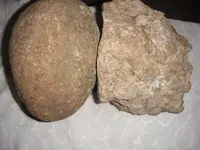
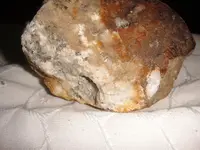
To our kind Treasure Hunting Masters/Gurus....
I am just humbly sharing some pics of things extracted at about three (3) meters underneath a mango tree in Lying Position in an Artificial Hill somewhere in Northern Luzon Philippines...
we just hope it can earn your interests. if possible kindly share to us what are the significance and meaning of these.... there are three (3) old bullets in all and are very near each other. the two in horizontal position with the remainder pointing downwards...
your feedbacks will be most appreciated... hope you can help a newbie like me...
thank you all... Happy Hunting... May the Good Lord lead us the way...
Last edited:
rangler
Bronze Member
- Joined
- Jul 12, 2004
- Messages
- 1,320
- Reaction score
- 201
- Golden Thread
- 0
- Detector(s) used
- for solutions to the jesuit code -email pics to: randy_ferringer@yahoo.com
;rangler8@gmail.no locations needed! oro bro!
- Primary Interest:
- Other
tigger,
these are clearly marks of some type-ammo had been found all over the PI as markers for yamashitas burials...
look for a triangle of rocks, or triangle of trees near the mango tree, look for old palm trees with slash marks,
look for large boulders with signs or marks on them..
rangler
hope you and yours are safe from the typhoon~!
these are clearly marks of some type-ammo had been found all over the PI as markers for yamashitas burials...
look for a triangle of rocks, or triangle of trees near the mango tree, look for old palm trees with slash marks,
look for large boulders with signs or marks on them..
rangler
hope you and yours are safe from the typhoon~!
Lil Tigger
Tenderfoot
- Joined
- Nov 7, 2013
- Messages
- 4
- Reaction score
- 0
- Golden Thread
- 0
- Primary Interest:
- All Treasure Hunting
tigger,
these are clearly marks of some type-ammo had been found all over the PI as markers for yamashitas burials...
look for a triangle of rocks, or triangle of trees near the mango tree, look for old palm trees with slash marks,
look for large boulders with signs or marks on them..
rangler
hope you and yours are safe from the typhoon~!
Rangler, Sir... our gratitude for your most helpful input...
we just hope our site is positive, as per history... it has been japanese camp according to some old folks...
what caught our interests was the heart shaped pendant.. do we expect some danger of sort if we proceed further?
there is a bonsai bignay tree, a tamarind and old duhat in triangle formation on upper portion of the property...
we also saw flat stone with etched letter "Y" on the corner of the lot as the property itself is some sort of a letter Y with municipal road and old barangay road as boundaries on the upper and on the side...
there is likewise a live water spring on the bottom portion of the lot with boulders of rocks with etchings of two parallel lines pointing upwards our site...
hope good friends like you can find encouraging interpretation on this...
again our gratitude, sirs...
Benguet treasure
Tenderfoot
Benguet treasure
Tenderfoot
can you please help me mr rangler and mrrenantagum 30 with these pics... we started digging somewhere in northern luzon and we encountered many signs that its not in our files.can you please help me decipher this codes and where to dig..thanks a lot.
Sergio ganassini
Tenderfoot
- Joined
- Aug 9, 2014
- Messages
- 3
- Reaction score
- 0
- Golden Thread
- 0
- Primary Interest:
- All Treasure Hunting
The first picture seems that the signs north, if it is made by a cross (I can not see clearly) and a species as S, while the second and third picture (the hole) indicates a tunnel entrance
Sergio ganassini
Tenderfoot
- Joined
- Aug 9, 2014
- Messages
- 3
- Reaction score
- 0
- Golden Thread
- 0
- Primary Interest:
- All Treasure Hunting
The letter Y usually means "tunnel" if it is alone.
Sergio ganassini
Tenderfoot
- Joined
- Aug 9, 2014
- Messages
- 3
- Reaction score
- 0
- Golden Thread
- 0
- Primary Interest:
- All Treasure Hunting
Rangler, you're right! In 1997-98 I worked in the Philippines as a consultant in a large tunneling project (somewhere in the north) we Italians had replaced a Korean company whose PM was a former official surveyor in the Philippines during WW II. He had maps of the area and for an entire year is dedicated to the recovery of gold from him and secretly mapped. My driver had been his driver and showed me the places where the Japanese have recovered some treasures. I could see with my own eyes the places and the signals present in the surroundings. In Camarines north I could see one of the treasures still hidden in a gallery near a Japanese blockhouse in the forest, it is composed of a stack of 21 layers of 45 bars (3x15) plus a layer with a row of 15 bars and a row of 10 bars. In total there are 970 gold bars. It 's too dangerous to retrieve them because there are too many NPA and PNP in that area, however I drilled some bar with a cordless drill and I've tested the gold with the acid which marks 22 K.
renantagum30
Sr. Member
- Joined
- Nov 5, 2011
- Messages
- 428
- Reaction score
- 171
- Golden Thread
- 0
- Primary Interest:
- All Treasure Hunting
you have a nice experience sergio. only by drilling and by looking for physical evidence that you can disprove that the jap treasure in the phil is a myth. i was also engaged in drilling, having paid almost half a million pesos for that drilling. i lost a fortune and i still failed.
i also dont agree that golds were hastily buried by the japanese. even a cement wall is so thick that you cannot break it with a powerful jackhammer alone. the wall is two feet thick. i will bet that you will spend one year and not break a cement wall of a treasure vault built by the japanese. you need another equipment to complement the jackhammer.
but as you see, filipinos should not attempt recovering it. those items are hidden by the japanese only for their consumption (and by the americans and their allies). if these items land in their enemies, it would be detrimental to their interest. it could finance the war cause of their enemies. so filipinos, like me, should choose between being alive and not continuing to recover this items or another option would be is to recover the items and be killed by the americans and the japanese. i choose the FORMER, BEING ALIVE AND NOT BEING ABLE TO RECOVER IT.. i want to be alive. i am now retired in this th activity. i also lost my fortune in recovering it but i failed miserably. besides, even locating a cement vault could take eternity for some filipinos.
i also dont agree that golds were hastily buried by the japanese. even a cement wall is so thick that you cannot break it with a powerful jackhammer alone. the wall is two feet thick. i will bet that you will spend one year and not break a cement wall of a treasure vault built by the japanese. you need another equipment to complement the jackhammer.
but as you see, filipinos should not attempt recovering it. those items are hidden by the japanese only for their consumption (and by the americans and their allies). if these items land in their enemies, it would be detrimental to their interest. it could finance the war cause of their enemies. so filipinos, like me, should choose between being alive and not continuing to recover this items or another option would be is to recover the items and be killed by the americans and the japanese. i choose the FORMER, BEING ALIVE AND NOT BEING ABLE TO RECOVER IT.. i want to be alive. i am now retired in this th activity. i also lost my fortune in recovering it but i failed miserably. besides, even locating a cement vault could take eternity for some filipinos.
Last edited:
renantagum30
Sr. Member
- Joined
- Nov 5, 2011
- Messages
- 428
- Reaction score
- 171
- Golden Thread
- 0
- Primary Interest:
- All Treasure Hunting
MY apologies if that will be the only pic that i can share in this treasure forum. other pics are confidential and for my consumption only. thanks.
Similar threads
- Replies
- 0
- Views
- 824
Users who are viewing this thread
Total: 1 (members: 0, guests: 1)



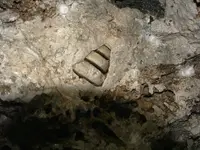

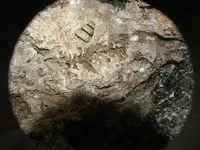
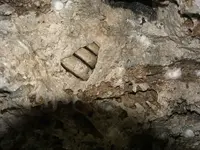
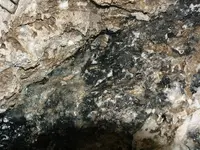
 any idea of what is the meaning of this Spiral sign? Below the sign, there is a hard cement covered by a Coaltar or Asphalt & Very bad smell cause hardly to breadth & a burning sensation of the eyes (hot).
any idea of what is the meaning of this Spiral sign? Below the sign, there is a hard cement covered by a Coaltar or Asphalt & Very bad smell cause hardly to breadth & a burning sensation of the eyes (hot).  Pls. contact me for more infos. 09278856921
Pls. contact me for more infos. 09278856921 